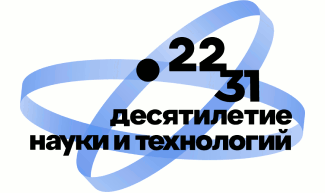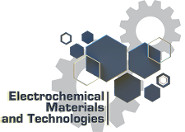Head of the laboratory:
Isakov Andrey Vladimirovich
PhD (Chemistry)
Tel.: (343) 3623149
E-mail: Isakov@ihte.uran.ru
The laboratory was founded in 1962. In 2007, it became a part of the electrode process laboratory. In 2018, the laboratory separated as an independent unit.
Founder – Baraboshkin A.N., DSc (Chemistry), Academician, Winner of the USSR State Prize. Awards: Order of the October Revolution; Order of the Red Banner; Order of the Great Patriotic War; Order of the Red Banner of Labor.
17 employees are in the Lab: 1 DSc (Chemistry), 3 PhDs (Chemistry), 1 PhD (Phys.-Math).
Key research fields:
- Development of ecologically pure and resource-saving electrochemical technologies and creation of test electrolyzers for high temperature galvanoplastics
- Thermodynamics and kinetics of electrode processes of ionization in ionic melts-electrolytes and its connection with electrolytes composition and type of electrode materials
- Development and investigation of novel oxidizing resistant materials
- Development of electrochemical processes of processed raw materials and technogenic wastes of non-ferrous industry and utilization of valuable components
- Investigation of electroreduction of polycrystal deposits of refractory and noble metals
- Development of processes for obtainment silicon and nanomaterials based on it
- Modelling the structure of molten salts complexes in electrochemical systems with molten electrolytes
- High temperature galvanoplastics in molten salts
- Nucleation in molten salts and development of electrochemical methods
- Obtainment of nanodispersed metal powders using secondary reduction in molten salts
Methods of research:
- Polarization methods, that is stationary and non-stationary (chronovoltamperometry, double pulse)
- High temperature galvanoplastics (obtainment of products, foils, and synthesis of nano-materials)
- Long resource tests of materials for heat resistance, including metallography and gravimetry
- Galvanostatic and potentiostatic nucleation of electron-conducting materials up to 0.0001 s
- Formation of powder materials using electrolysis with high specific surface
- Obtainment of thin silicon-films up to 0.04 mkm with controlled thickness
- Obtainment of materials resistant up to 2200°C in oxidizing media ( type Ir-Re-Ir)
Main achievements:
- The existence of phase voltage during crystal nucleation on the cathode in molten salt media has been proved.
- Criteria for electrodeposition of continuoned deposits and powders of rare refactory metals from salt melts have been created.
- The theory of microdistribution of the flow of deposited metal on the cathode as well as unified theory of growing texture connecting the axis direction of the oriented deposit with its faceting and current microdistribution has been created.
- Quasichemical approach for electrode processes in molten electrolyes, allowing managing the composition of cathode products has been developed. Due to these studies a technology of galvanoplastic obtainment of products from refractory metals was created and introduced into production.




